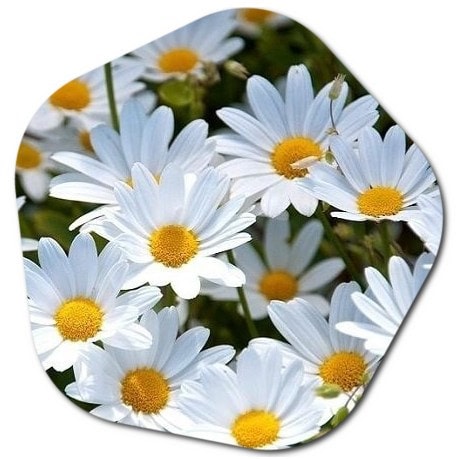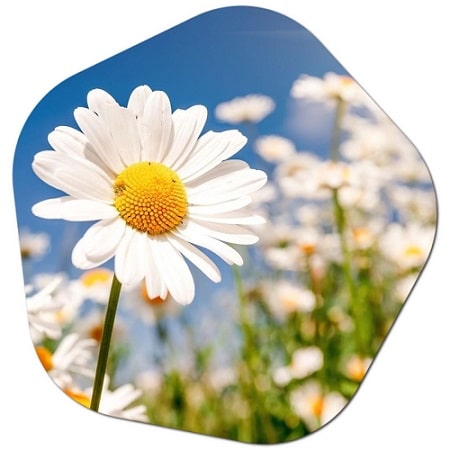How many daisy are in the world?
What is the homeland of the daisy? Roman chamomile: A perennial plant native to Western Europe. It is distinguished from other daisy species by its thick grey green leaves. Traditionally used for stomach ailments. German chamomile: German chamomile, a plant native to Europe and Western Asia, is known for its anti-inflammatory and antioxidant properties.
Daisies are diverse flowers with over 20,000 species, making them one of the largest flowering plant families globally. The common daisy, a well-known variety, is found worldwide, constituting approximately one in ten flowering plants. Its adaptability allows it to thrive in various climates on every continent except Antarctica. Given the vast number of daisy species and their widespread distribution, it is challenging to provide an exact count of how many daisies exist in the world. The diversity and adaptability of daisies contribute to their prevalence in different ecosystems. In summary, pinpointing the exact number of daisies in the world is difficult due to their extensive variety and global distribution.
The term “daisy” is a common name that can refer to a variety of flowers within the Asteraceae family. There are numerous species and hybrids of daisies found around the world. Some well-known types of daisies include the Oxeye Daisy (Leucanthemum vulgare), Shasta Daisy (Leucanthemum × superbum), and English Daisy (Bellis perennis).

It’s challenging to provide an exact number of all daisy flowers in the world, as new species can be discovered, and cultivars and hybrids are continually developed. The Asteraceae family, to which daisies belong, is one of the largest plant families and includes a vast number of species.
If you are interested in a specific genus or species of daisy, you may want to consult botanical databases, field guides, or scientific literature for the most up-to-date information on the diversity of daisies worldwide. Additionally, the number of daisy flowers may vary depending on how one defines and categorizes different species, subspecies, and variations within the Asteraceae family.
What is the most common daisy?
The Oxeye Daisy (Leucanthemum vulgare) is one of the most common and widespread daisy species. It is native to Europe and Asia but has been introduced to other parts of the world, including North America, where it is often considered an invasive species. The Oxeye Daisy is known for its distinctive appearance:
- Flower: The flower has white petals with a yellow center, creating the classic daisy appearance.
- Leaves: The leaves are lance-shaped and deeply toothed.
- Habitat: Oxeye Daisies are commonly found in meadows, grasslands, roadsides, and disturbed areas.
- Blooming Season: They typically bloom from late spring to early autumn, and the flowers are held atop long stems.

While the Oxeye Daisy is prevalent and easily recognizable, it’s worth noting that there are many other daisy species and related plants within the Asteraceae family, each with its own characteristics and distribution. The Shasta Daisy (Leucanthemum × superbum) is another well-known daisy, often cultivated for its larger and showier flowers. It is a hybrid of several daisy species, including the Oxeye Daisy.
Why are daisies so popular?
Daisies are popular flowers for several reasons, encompassing their aesthetic appeal, versatility, and symbolic meanings. Here are some factors contributing to the popularity of daisies:
- Simple Beauty: Daisies have a simple and timeless beauty with their distinctive white petals and yellow central disc. This simplicity makes them visually appealing and versatile in various floral arrangements.
- Versatility: Daisies are versatile flowers that can be incorporated into a wide range of floral designs, from casual bouquets to formal arrangements. They work well in both garden settings and indoor settings.
- Wide Availability: Daisies are widely available and can be found in many regions around the world. This accessibility makes them popular for floral arrangements, landscaping, and gardening.
- Long Blooming Season: Many daisy varieties have a relatively long blooming season, providing a steady supply of flowers over an extended period. This characteristic contributes to their popularity in gardens and floral displays.
- Adaptability: Daisies are adaptable to various growing conditions, making them suitable for different climates and soil types. This adaptability enhances their popularity among gardeners.
- Symbolic Meanings: Daisies carry positive symbolic meanings, often associated with innocence, purity, and simplicity. They are sometimes used to convey sentiments of loyalty and love.
- Cultural and Artistic Significance: Daisies have played a role in literature, art, and cultural symbolism. Their appearance in poems, paintings, and folklore has contributed to their enduring popularity.
- Low Maintenance: Many daisy varieties are relatively easy to grow and maintain. They are often considered low-maintenance flowers, making them attractive to both experienced and novice gardeners.
- Pollinator Attraction: Daisies are known for attracting pollinators, such as bees and butterflies, which contributes to the biodiversity and health of gardens.
- Cultivars and Hybrids: There are numerous cultivars and hybrids of daisies, offering a wide array of sizes, colors, and petal arrangements. This diversity provides options for various preferences and design choices.
Whether used in floral arrangements, wedding bouquets, or garden landscapes, daisies continue to be beloved for their charm, adaptability, and the positive sentiments they convey.





